Original publish date – 12/4/21
3/21/22 update – Added Bodum French Press and re-validated the original list to make sure they’re still being sold. They are 🙂
4/25/24 update – validated entire list and added Keurig, Nespresso, Chemex, and Hario
History of the Coffee Maker
Coffee has been a thing for thousands of years, of course. For hundreds of years, people brewed coffee by roasting and grinding beans and putting them into a pot of hot water. In the 19th century, the French invented the infusion process (basically putting coffee grinds into a giant tea bag), invented drip brewing (pouring water through a filter), invented the percolator (where boiling water forces itself through a tube into an upper chamber and then “percolates” drip by drip into a lower chamber), and of course the French press, or cafetière. It probably didn’t hurt that Napoleon loved the stuff.
Strong coffee, and plenty, awakens me. It gives me a warmth, an unusual force, a pain that is not without pleasure. I would rather suffer than be senseless
Of course, coffee makers really took off commercially in the mid-20th century when American ingenuity made new innovations. In the 1950’s, George R. Bunn, Jr. invented the pour-over drip coffee brewer and the flat-bottomed fluted coffee filter. His Bunn-O-Matic brand paved the way for the proliferation of brands you see today, from Mr. Coffee, Cuisinart, OXO, Hamilton Beach, Black and Decker. All of which, of course, are made in China now.
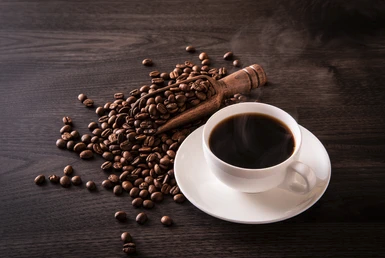


Are any Coffee Makers not made in China?
Surprisingly, there’s a bunch of them. BUNN, which started the whole thing, still produces much of the commercial coffee making equipment you’ll find in your favorite restaurants and fast food joints. If you’ve enjoyed coffee at Dunkin’ Donuts, Tim Horton’s, 7-Eleven, McDonalds, and likely your favorite restaurant or café, it was brewed on BUNN equipment. And they have a whole line of consumer equipment too. While some of their models are made in China, most of their models, particularly the higher end ones, are still assembled in the USA.
Sadly, the majority of once-strong European brands like Krups and Braun (which is really De’Longhi) have moved all of their manufacturing to China very recently (if you read the Amazon Q&As, the Braun KF7070 was made in Romania as of May 6, 2019, but as of December 9, 2020, it’s made in China). Technivorm is the last European brand hanging on to non-China based manufacturing. We’ll break down the best below.
There’s also a new batch of US-based companies who are coming up with their own designs for old school non-electronic coffee makers, some of which have rave reviews on Amazon (remember, coffee was made for hundreds of years before electricity came around). No doubt companies in China are already copying their designs and selling them under fake brand names, but their price points are so low it’d be a crime not to support them.
Best Coffee Makers Not Made in China – Quick Ranking
1. AeroPress – Best Overall
I had to do a double-take when I saw the Amazon reviews for this one. It has a solid 4.8 rating over more than 12,000 reviews. The AeroPress was patented by Alan Adler in 2004. If you were around in the 1980s, you may remember a new kind of frisbee shaped like a flat ring called the Aerobie. That was patented by Mr. Adler too. Along with over 40 other inventions. Adler is a true American success story; before he retired he taught engineering at Stanford University, and today he is still a sought-after lecturer at places like Stanford, NASA, Google, Caltech, Princeton, and many more.
It was in 2004 that Adler began to study the coffee brewing process and came up with the AeroPress. Interestingly, it looks just like a French Press. But according to the company–and to thousands of real, non-shill reviewers–it produces coffee faster (in one minute), avoids the bitterness and acidity, and eliminates grit from the bottom of your cup that makes drinking a cup of French Press so anticlimactic.
Here’s how it works.
The secret is in using air pressure, i.e., the short time it takes to brew in the patented air-tight container. You start with the right temperature (most people prefer 175 degrees) and then press gently (about 12 pounds of force, or about double the amount of force it takes to break an egg). This extracts rich flavor while leaving bitterness in the grounds vs. letting the coffee steep for many minutes in a French Press.
Best thing about it? Everything is made in the USA, not just the assembly of the parts, but the parts themselves. They’re a bit coy in that they don’t publicize such a strong selling point (leading me to suspect that there are some people pressuring Mr. and Mrs. Adler, the owners of the company, to sell out). But the fact that they’ve gone so long without selling out to China gives me hope. Mr. Adler has clearly stated himself in the Q&A on his site that “AeroPress coffee makers are made in the USA.”
There are many in Amazon reviews, Youtube videos, blogs, and social media who with no irony declare that a cup of coffee brewed in an AeroPress is the best they’ve had, even better than cups from thousand-dollar coffee makers. And surprisingly, I don’t see any Chinese “fake” brands aping the AeroPress design; AeroPress has been wise not to outsource to subcontractors in China who would not think twice about stealing its design and intellectual property secrets as so many other coffee makers companies in the US have.
2. Technivorm Moccamaster KBG
As I mentioned, European companies that once prided themselves on keeping manufacturing within Europe like Krups and Braun (De’Longhi) have completely sold out. Luckily for everyone who wants to support a company who hasn’t completely sold out, the very best electronic, automatic coffeemaker is still not made in China.
It’s the Technivorm Moccamaster. All Technivorm Moccamaster filter coffeemakers are handmade in the Netherlands, and have a 5-year limited warranty.
Admittedly, I spent half a day trying to make heads or tails of their different models based on their Web site and their Amazon page. They haven’t done a great job at maintaining logical branding for their products, so I’ll try to sort it all out for you here.
All of the Moccamaster models feature a copper boiling element that heats water to the perfect temperature for brewing coffee, just off the boiling point (between 196 and 205 degrees F) and through a unique hot plate on the base holds the coffee at the perfect temperature for drinking, at your choice of either 175 or 185 degrees (never burning the coffee). A full carafe brews in six minutes, and their unique 9-hole outlet arm pulses water over your coffee to ensure even extraction and saturation.
KBG – Their most popular model, the KBG is the one I ultimately chose to highlight as the best, although all models in this line are a good choice. In this model, an automatic brew basket will ensure that even if you pull the carafe away you won’t get any drips. It switches off automatically when the water reservoir is empty, or after 100 minutes for safety. A switch allow you to brew a full carafe (6-10 cups) or a half carafe (2-6 cups), all with optimal brew cycles.
KB – This model is essentially the same as the KBG, but it doesn’t have the automatic brew basket (there is a switch that allows you more manual control to steep your coffee longer, allow regular brewing, or close the brew basket so you can pull the carafe away). It is also limited to just a full carafe (6-10 cups)
KBGT and KBT – The “T” after the letter indicates that the pot is an insulated thermos rather than a glass carafe.
HBG and HB – These models are the same as the KBs, except that the hot plate is limited to 175 degrees.
The Technivorm Moccamaster is often cited not only as the best coffee maker not made in China, but the best high-end coffee maker made anywhere, by ordinary coffee drinkers and baristas alike. It’s achieved the #1 ranking by Cooks Illustrated, CNET, and USA Today, are certified by the Speciality Coffee Association (SCA), and have been granted the European Coffee Brewing Center’s (ECBC) Seal of Approval meeting their strict and highly demanding gold cup quality guidelines. It routinely wins taste tests as the best tasting cup of coffee from a filter brewer available anywhere.
3. BUNN Speed Brew
BUNN hasn’t been able to completely avoid manufacturing in China but for an industry pioneer, I’m impressed that they’ve managed to keep so much of their production at home. From the looks of it, most of the units in their “Speed Brew” line are still made in Iowa while certain new models like the CSB1 and the “Heat N’ Brew” are made in China. Avoid those like the plague.
Within their US-made line, BUNN has a dizzying number of models to choose from, but most of the differences have to do with your choice of vessel (a glass carafe or a thermal pitcher) or color of the unit.
All models use an internal commercial grade stainless steel water tank (not plastic) that keeps 70oz of water always hot. This makes this line of coffee makers one of the fastest (if not the fastest) in the world, brewing a whole carafe in 3-4 minutes, half the time of most coffee makers.
They all use a commercial-style multi-stream sprayhead to evenly shower water over your coffee, just like the units at your favorite coffee shop or café (who very likely use BUNN commercial equipment produced in the same plant).
If you’ve ever had to deal with messy coffee grinds from a typical filter-based coffee maker, you’ll appreciate that BUNN filters (and the funnel that holds them) are 1/4″ taller than other filters, allowing water to flow quickly and preventing overflow.
All of their models have a three-year warranty.
Here are some of the differences between the models, which are mostly related to outward appearance.
– BX Speed Brew Classic – This is the basic model, and the most popular. It has a classic black finish and stainless-steel nameplate. It has a glass carafe with a proprietary spout and lid design where messy drips are a thing of the past–your coffee flows straight into your cup with no mess. A warmer plate keeps your coffee at just the right temperature.
– CSB2B Speed Brew Elite – This is the same as above with a matte black finish and stainless steel backsplash and top accent. It also comes in a High Altitude version that adjusts the brew to accommodate differences in air pressure at higher elevations.
– They also have variations like this one for those who prefer thermal pitchers to glass carafes.
Not only are all models manufactured in the USA, their customer service is out of Springfield, Illinois meaning you won’t have to deal with non-native English speakers trying to sound convincing.
4. Keurig K-Classic Single Serve Coffee Maker
I was beyond thrilled to see on a recent trip to Target that the Keurig K-Classic Coffee Maker is now made in Indonesia.

Likewise, I saw that the K-Mini model that Target stocked was made in Malaysia, the K-Supreme Plus was made in Thailand, and the K-Cafe Smart, K-Express, and K-Iced Plus are made in Indonesia.
Now before we get too excited, remember that Keurig Dr Pepper isn’t doing this out of the goodness of their hearts. Likely related to the 2018 tariffs and the tyrannical response to COVID by the CCP in 2020, they’re wisely diversifying their manufacturing—luckily, it looks like they were able to make the transition in a lot less time than, say, Apple. Whose PR department wants us to believe that they’re making all their phones out of India and Vietnam now when they’re still all-in on their multi-billion China investment.
It’s possible that there is still at least some manufacturing going on in China, and it’s likely that there are still lots of old made in China units sitting in warehouses, so this is a situation where I’d absolutely recommend walking into your local Walmart or Target and reading the box for yourself before you buy it.
For those who aren’t familiar with the concept of Keurig, it’s a machine where you can insert a plastic pod filled with coffee grinds, and the machine will poke a hole in the pod and use a stream of water to brew a surprisingly decent cup of coffee with no mess, no residue. The price of Keurig pods are surprisingly affordable and if you’re like me, you can save even more money by grabbing an occasional Keurig pod at your workplace, your hotel, or your bank to use at home (shhhhh!).
5. CHEMEX Original Pour-Over Glass Coffeemaker
If you don’t mind waiting for your coffee, there’s no better way to brew the perfect cup of coffee than by pour-over. Pour-over coffee is exactly what it sounds like: you take finely ground coffee, put it into a filter, and gently pour boiling water so that it flows through the coffee into a glass container.
Most people don’t have the time and patience for this, but done right it’s absolutely the best coffee you can drink. I recently went to a Taiwanese festival in New York City, where I met the owner of First Coffee and in my exuberance ended up buying a bag of $75 coffee picked and roasted in the mountains of Alishan (which also produces some of the best tea in the world).
He was kind enough to give me a sample taste of the coffee. I watched as he painstakingly poured water from a tiny kettle into the grounds. Being a New Yorker in the middle of Manhattan, I had to resist the urge to go crazy as he patiently poured the thin stream of water and the coffee slowly dripped into the resevoir.
It was simply amazing. The flavors were incredibly rich and complex. It was one of the most perfect cups of coffee I’ve ever had.
That inspired me to look for my own. There are two names that stand out. The first is CHEMEX, which was invented by Dr. Peter Schlumbohm in 1941 and continues to be manufactured from their factory in Massachusetts to this day. You can purchase coffee makers from 3 cups all the way to 13 cups. Even better, their replacement filters are made in North America as well.
Another option for a pour-over coffee set not made in China is Hario, which is made in Japan. As with CHEMEX, Hario started its history as a manufacturer of laboratory glassware but found a huge market creating quality glassware for coffee making.
6. Moka Express
The Moka Pot was the original “stovetop espresso” maker, patented in Italy in 1933. The invention revolutionized the concept of making coffee at home, and to many people continues to be definitive way to make a cup of Italian coffee.
“Stovetop espresso” isn’t quite the same thing as espresso from a machine, which extracts the flavor from the coffee beans at high pressure. But it’s a much more affordable option and yields great results if you follow the instructions.
Moka Pots work by heating water in a lower chamber. While drop coffee makers work by gravity, Moka Pots work by pressure, as water vapor is forced up through the coffee grounds to brew a flavorful cup of coffee in the upper chamber. It’s an iconic brand and an iconic design, still made in Italy.
7. Giannini Expresso Maker
Giannini is an Italian company that’s taken the concept of the Moka Pot and made several improvements. This is one of the more popular high-end models. Unlike the original, it’s made of stainless steel so it won’t darken with age.
Usually these units are only available in Italy, but Amazon third party sellers that import from Italy are selling them.
To use it, fill the base with water, insert a funnel and a basket filter with coffee ground to an expresso grind. As the water comes to a boil the airtight design will create pressure within the unit that brews the expresso quickly but to perfection. There’s an excellent video here.
Add milk or your favorite mocha sauce to create hand-crafted coffee a lot quicker, a lot cheaper, and a lot better than Starbucks.
8. Hario “Technica” Glass Syphon Coffee Maker
A few years back I went to Disney World and treated my wife and me to dinner at the fancy restaurant Victoria and Albert. When dessert time came along the server brought out a huge contraption that looked like it came out of Mr. Wizard’s science lab. I remember her turning on a gas burner and then seeing water and coffee shoot all over an intricate series of glass pipes before landing in my coffee cup. It was, bar none, one of the best cups of coffee I’ve had in my life.
I happened to stumble upon this Hario Coffee Maker, which works the same way. The technology is called siphoning, and it uses the laws of physics to make a perfect cup of coffee. It has two glass chambers. Water on the lower chamber is heated, producing vapor that fills the upper chamber with the coffee grounds. As the heat is removed, the now-cooler bottom chamber uses pressure to draw the water back from the upper chamber, through a filter. The result is a bright, rich, and clean cup of coffee.
Yes, it’s a big hassle, but the coffee is outstanding and it makes an unique conversation piece. Plus, it’s made in Japan, so you know the parts and the mechanics are top quality.
9. Bodum “Brazil” French Press Coffee Maker
I’ve been keeping my eye on Bodum for a while. Most coffee aficionados recognize them as one of the most popular brands of kitchenware. Bodum was founded in 1944 in Copenhagen, Denmark by Peter Bodum, and the company was moved to Switzerland in 1978. They became especially popular in the United States around 2016 when they entered a partnership agreement with Starbucks, which has since expired.
I’ve been familiar with Bodum because of their double-walled insulated glasses. For years they were manufactured in Switzerland, but all production went to China as of a few years ago and quality has clearly gone down. But consumers who never experienced the old product continue to buy the new one and don’t know what they’re missing.
As of now this French Press coffee maker and their version of the vacuum siphon coffee maker are still made in Portugal. But their move of their iconic double-walled glasses makes me suspicious as to whether they plan on doing the same to their other product lines. Let’s hope not. Until they do, they have a definite place on my recommended list.
10. Nespresso Vertuo Pop+
DeLonghi has disappointed me time and time again by outsourcing a lot of their production to China. However, this Nespresso machine is still made in Hungary. It’s not Italy, but at least it’s not China.
Nespresso basically copied the concept of Keurig but for making espresso, which you can then use to craft your own cappuccino, lattes, and Americanos or just enjoy as an espresso.
Do you know of other coffee makers that have avoided the China trap? Let us know in the comments!
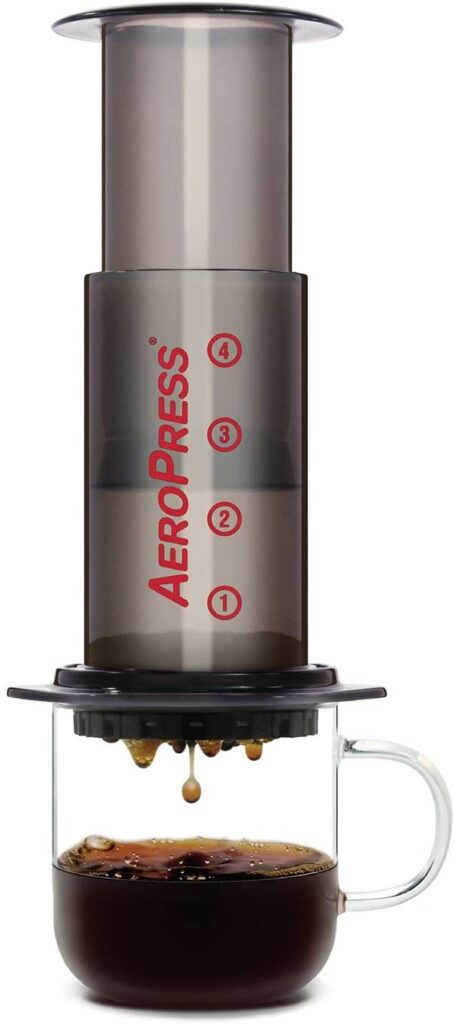
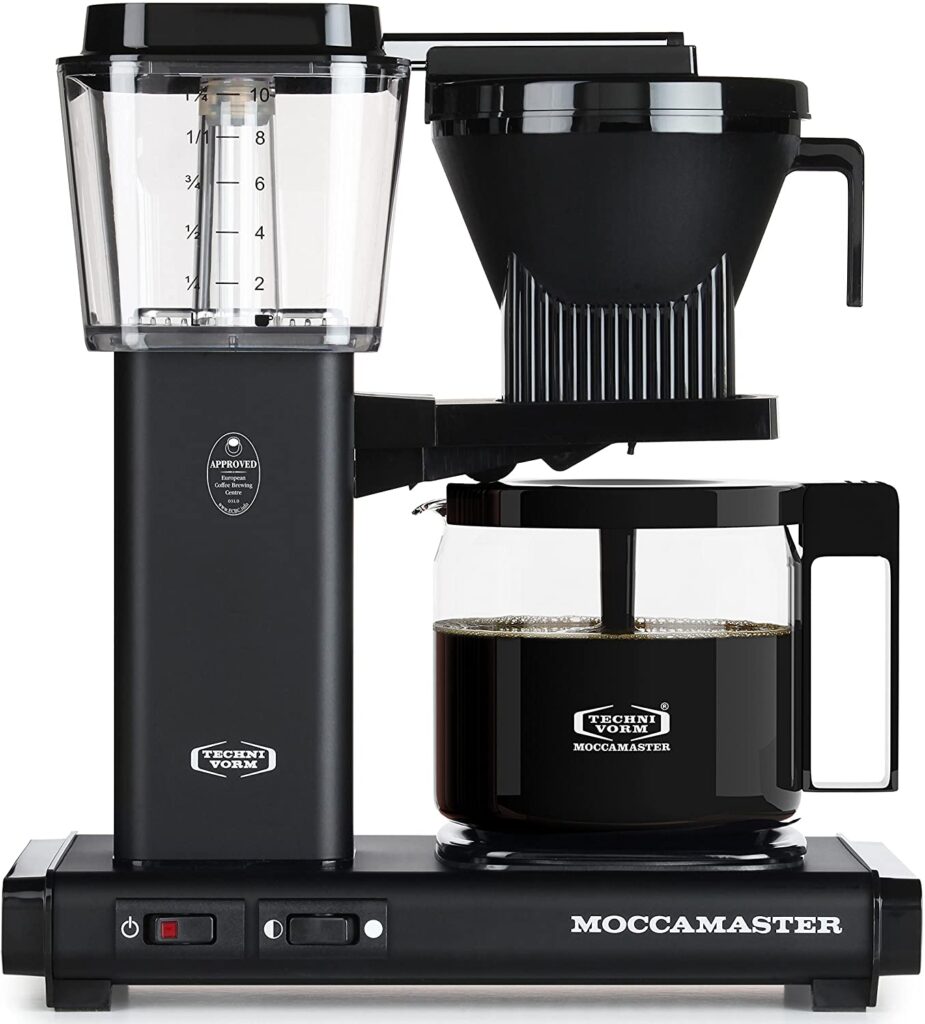
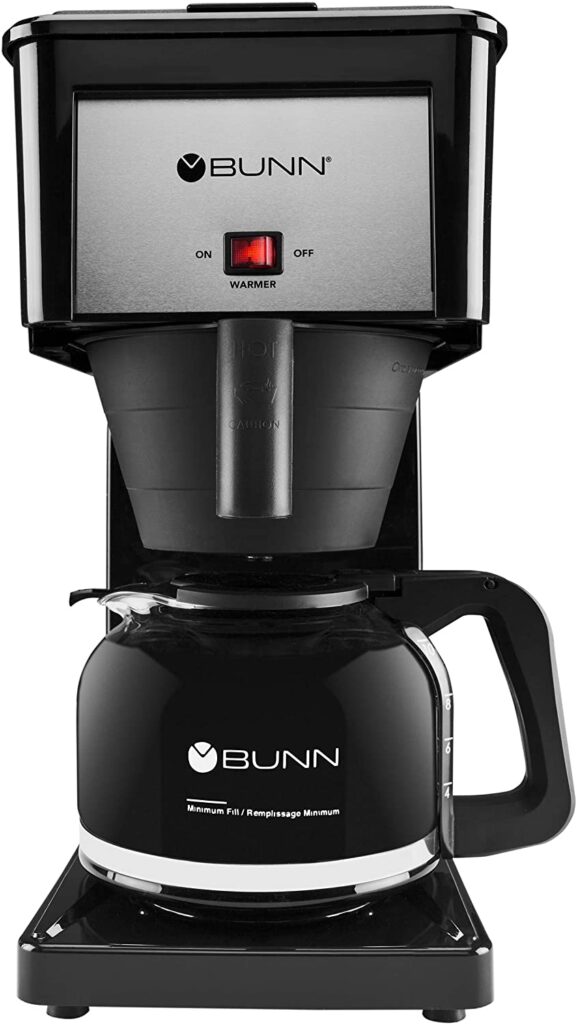

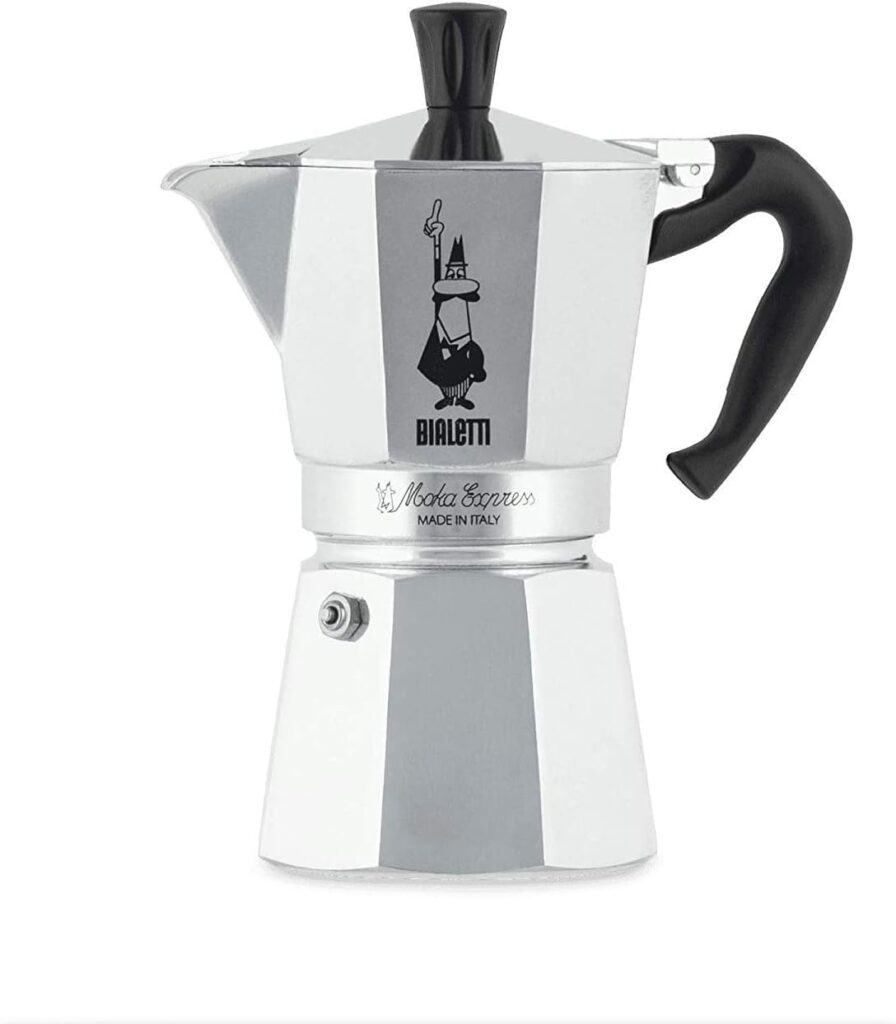
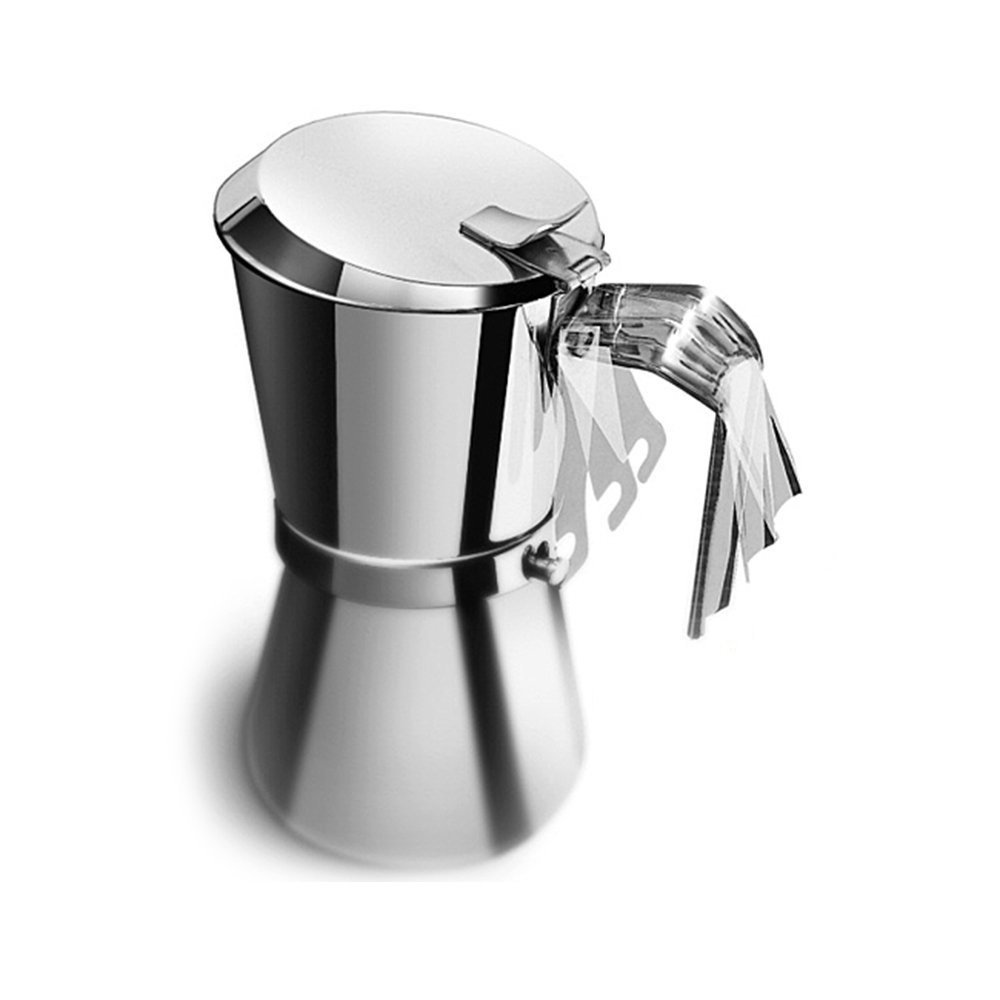

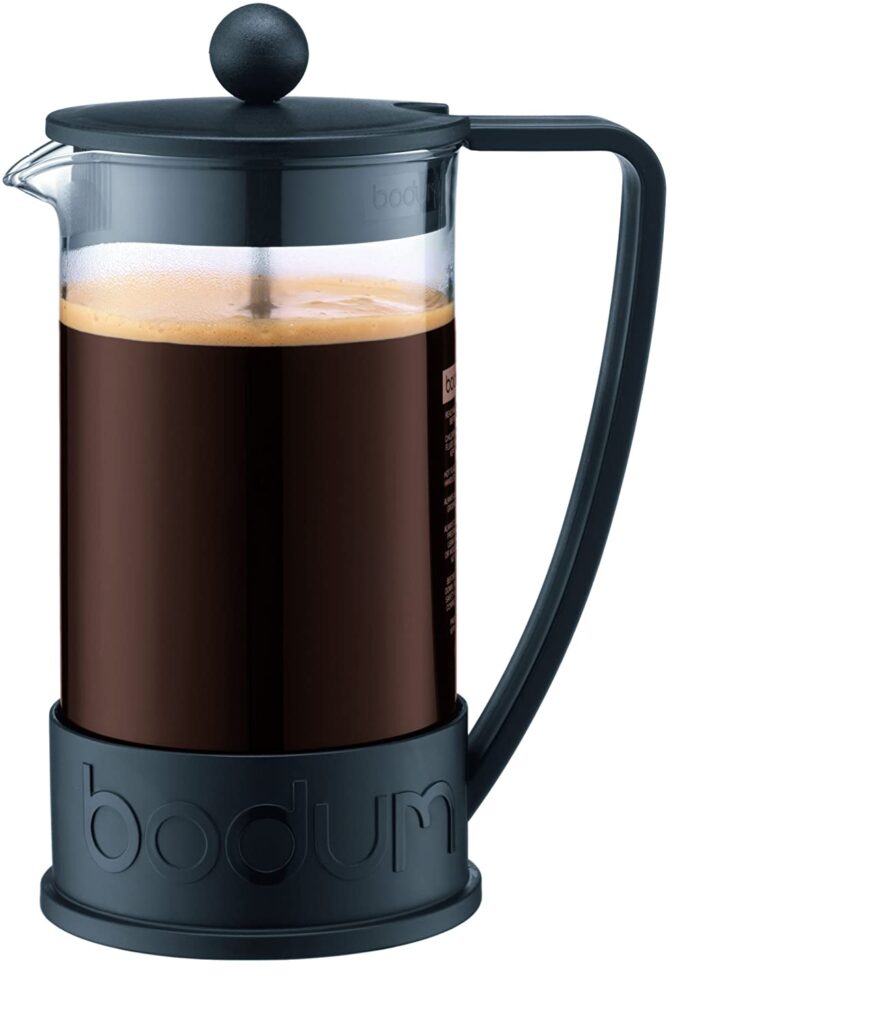


How nice to see the Technivorm Moccamaster as one of the best coffeemakers.
I do own one for 2 decades and my grandmother had one for 40 years! They are indeed build to last.
Thumbs up for this great value coffeemaker! Made in Holland.
Moccamaster is a huge disappointment. There is a major flaw in the shower head that saturates only one side of the basket and as the coffee blooms it prevents the rest of the grinds from getting saturated. This is the “isolated saturation” issue in the “cons” section. I’m ready to sell my Moccamaster that I’ve had for 2 years. Unless you manually stir it as it’s brewing you will not get an even brew.
Why can’t I find solid info on percolators? You don’t have any, neither does Made in USA. I wanna smell my coffee perking again.
Thanks for your question, Linda. Unfortunately I can’t find a whole lot of percolators that are not made in China–as I’m sure you’ve seen, most of the sites that claim to have found them are misleadingly linking to brands like Farberware and Cuisinart which sold out to China manufacturing many years ago.
There are two I came across–I didn’t put them on my “best of” list because neither have a lot of reviews, but I’ll add them here if you’re interested in checking them out:
The first is a pricey one that’s made in Japan and sold by Bally:
https://fave.co/3u3aFQh
And the second is a surprisingly inexpensive one, sold by Lehman’s and made in the USA:
https://fave.co/3ABJ7ml
If you (or anyone) ends up buying one of these, I’d love to hear your experience, and if you love them I’d love to add them to my list!
Thank you so much for doing this research for us, Steve!! We have been avoiding stuff made in China since late ’90s. So glad to see others joining in, and helping us with these articles!
Italian made espresso percolators tend to be made in italy
I haven’t have any luck finding a coffee grinder not made in China. I just returned a Christmas gift because was made in China. I would only buy CCP product if there is nothing else in the market. Have you seen any coffee grinders made anywhere else but China. Thanks!
Zassenhaus manual grinders are made in Germany
Try looking for hand grinders or vintage equipment on ebay
Found out yesterday that the French Press from Ikea is made in Czech Republic.
Info:
Bosch TKA6A044 drip coffee maker is labeled as “Made in Poland”.
Photo: https://a.allegroimg.com/s1024/0cc2cc/21a38f03460b8b690d83249cebea
I can confirm, as I got exactly the same model, and it’s also labeled as being made in Poland.
Note: As this coffee maker is pretty cheap (~€30) I suspect it is merely assembled in Poland. But hey, better than nothing, I guess…
You forgot about the Londinium Espresso R24 and their new model the Vectis.
All their machines are hand built in London.
And absolutely world class.
Hello.This article was extremely motivating, particularly because I was looking for thoughts on this topic last Saturday.
Concerning the Mochamaster, the hot water is not evenly distributed so that there is a total bloom of the ground coffee. I ended up pulling off the metal attachment with the holes that sprinkles the water and drilling five additional holes in it, then replaced it. This improved the performance, but it is still a little uneven. The only benefit of this coffee maker is that it brews a fast pot of coffee.
Hello.This post was extremely motivating, especially since I was browsing for thoughts on this matter last Saturday.